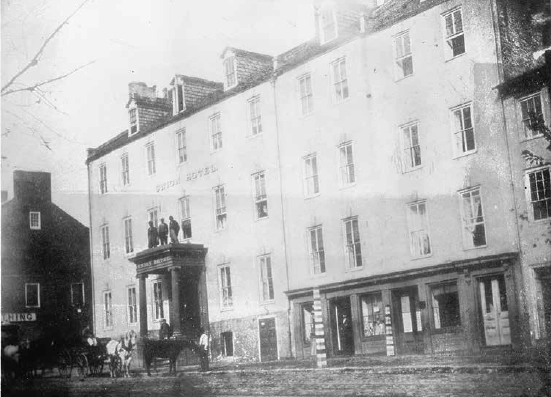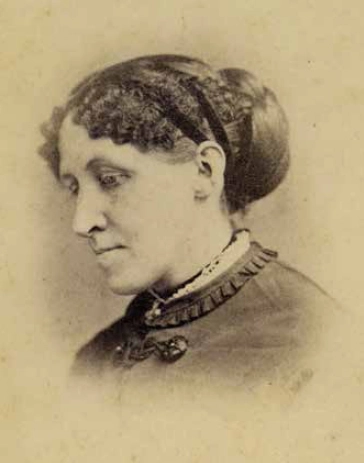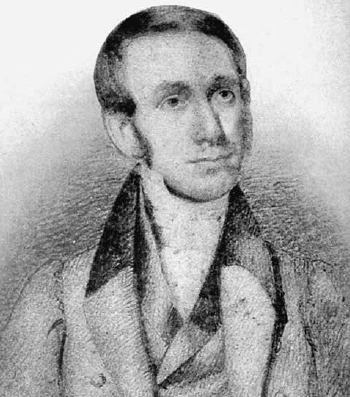With its cheeks “glowing with the flush that amusement or vexation brought to them,” it was “a most pleasing one to look upon.”5 Alcott’s physical vitality carried over fully into her character, and it was a force that she found extremely hard to control. Even in the memory of her highly forgiving older sister, Anna, she “was a dreadful girl, always full of wild pranks.”6 Others found her “a strange and unpredictable creature, full of . . . moods, impulsive and loving and fretted always by the restraint of being a young lady, not a boy.”7 It is probably no great coincidence that that three of the observers just quoted remembered the young Alcott as being “full” of one thing or another. There was within her, it seems, a certain overflowing quality, a superabundance of emotion and energy that her spare, athletic body could barely contain.
If that same visitor were to have encountered Alcott again twenty-one years later, in the year when she wrote Little Women, she or he might have been sobered by the tremendous change that its author had undergone. To a fan who later wrote to ask her what was the easy road to success as a writer, Alcott replied that there was none. As she herself retold it, Alcott had “worked for twenty years poorly paid, little known, & quite without any ambition but to eke out a living, as I chose to support myself & began to do it at sixteen.”8 The hard work alone would have stolen some of the bloom from Alcott’s cheeks, but she had suffered through a frightful illness as well. In January 1863, while serving her country as an army nurse during the Civil War, Alcott contracted typhoid pneumonia at the hospital where she was on duty. Her doctors had worsened the situation by giving her large doses of calomel. The medicine, a mercury compound, lodged in her system and nearly killed her. Alcott suffered the effects of mercury poisoning for the remainder of her life. The symptoms came and went; at times she felt well, but at others she struggled against an “invalidism that I hate worse than death.”9 Her former healthy, brimming fullness never entirely returned. Commenting on portraits made of her after her illness, she observed, “When I don’t look like the tragic muse, I look like a smoky relic of the great Boston fire.”10 Once Little Women had made her and her family famous, people flocked to Concord “to come and stare at the Alcotts.”11 It saddened her that so many visitors came in expectation of seeing the perennially young “topsey turvey” Jo March of Little Women, only to find instead “a tired out old lady.”12 Despite the wearying effects of time and illness, however, the spirit fought to remain essentially unaltered. Alcott wrote, “In spite of age, much work, and the proprieties, an occasional fit of the old jollity comes over me, and I find I have not forgotten how to romp as in my Joian days.”13

Illness and overwork nearly killed Alcott during her nursing service at the Union Hotel Hospital in 1862–63. However, her trials taught her the value of writing about realistic subjects and led to her first great publishing success, Hospital Sketches. (Library of Congress)
One comes to the author of Little Women, then, with a choice of Alcotts: the boisterous young woman with a tremendous love of fun and an equally prodigious temper, or the successful, matronly author, still generous and good-humored but old before her time. The choice becomes more complicated when one reads the letters and journals of the grown woman side by side. The letters, while they freely acknowledge Alcott’s difficulties, are typically buoyant in tone. The journals, in which Alcott felt no obligation to perform or otherwise maintain appearances, are correspondingly darker, revealing a woman inwardly soured by chronic illness and frustrated with having neither the health nor the time to attempt the books for adult audiences that she wanted to write.

A three-quarters view of Louisa May Alcott. (Louisa May Alcott Memorial Association)
Ironically for an author whose work so frequently celebrates the blessings of domestic life, much of the force that wore Alcott down at such an early age came from within her own family. A man with deep contempt for most worldly occupations, Louisa’s father, Bronson, made a modest living during Louisa’s early childhood as a schoolmaster. When Louisa was not yet seven, however, Bronson’s controversial teaching methods and progressive opinions (he enrolled a black child in his Boston school, prompting an exodus of white families) brought an abrupt and bruising end to his career. Thereafter, he earned money sporadically by giving public conversations and performing agricultural labor. However, from the time Louisa was six until she was twenty-six, her father had no steady income. Beginning in her teens, Louisa worked to help supply her parents and sisters with necessities that her father could not afford. Louisa’s early-acquired habits of self-sacrifice for her family persisted until her death. In later years she subsidized her nephews’ education as well as her younger sister May’s artistic training and European travels. When May unexpectedly died, leaving a baby girl, Louisa became the infant’s guardian. At fifty-five, Alcott wrote, “As I don’t live for myself I hold on for others, & shall find time to die some day, I hope.”14 Only two days later, that time found her.

A trusting, optimistic expression illuminates this early portrait of Bronson Alcott.
Yet the family that seemed forever to be holding Alcott back also gave her life much of its direction and meaning.
1 comment